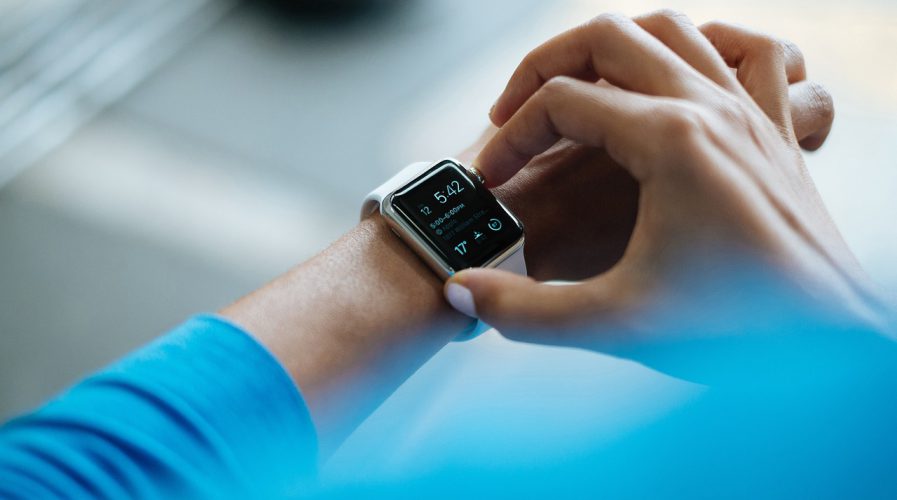
Smart wearables are improving safety and productivity in the workplace, but privacy can be a concern. Pic: Pixabay
How smartwatches and wearables are changing the way we work
WHEN wearable smart devices first came into the picture, they had one purpose: to be an extra screen for your smartphone. Meant to display notifications, and of course the time, smartwatches gave users another way to keep tabs on messages and social updates – as if we don’t have enough already!
The use of smart wearables has now evolved. Even before the Apple Watch and countless Android-based smartwatches emerged, fitness-oriented devices like the Fitbit and Nike+ were all the rage among weight-watchers. However, these also have quite a lot of potential when it comes to business, especially in light of the rising Internet-of-Things (IoT), in which virtually anything can be connected to the Internet through low-power sensors and transmitters.
Enhancing workplace efficiency and safety
One clear example of wearable devices benefiting the workplace is in retail. Tesco, for one, has been using sensors and armbands that automatically track goods and workers, making it easy to keep inventory across hundreds of aisles and shelves in the store. With these wearables in place, employees don’t have to take notes on clipboards anymore, significantly improving efficiency.
SEE ALSO: Latest on Apple Watch release: The importance of apps
Such implementations can help improve business intelligence (BI), by enabling managers to better keep track of the flow of goods, which helps optimize operations and the supply chain. IoT can also help improve the time and motion aspect of the workflow. By giving managers a real-time assessment of how people and items move, and how much time it takes to accomplish tasks, the organization can make adjustments to improve efficiency.
According The Human Cloud at Work, a study commissioned by Rackspace, employees using wearable smart devices at work can become 8.5 percent more productive and 3.5 percent more satisfied with their jobs. These devices make workplace efficiency studies much more measurable and thus effective.
Going beyond productivity, wearables can also help improve safety in the workplace. For instance, wearables can monitor fatigue levels and other potential hazards people in field work encounter every day, and can help prevent workplace accidents. A smart cap, for instance, monitors brain activity and tell managers if a truck driver is too tired to concentrate, which could reduce the likelihood of an accident.
Improving happiness and satisfaction
The aforementioned study attributes an improvement in workplace satisfaction to the use of wearable devices. This can be accomplished through several means.
For example, using fitness trackers can help organizations negotiate for better health care insurance programs or coverage. Such use of big data is already considered an essential part of the business for many HR departments and insurance providers.

A Fitbit wearable. Pic: Flickr/Insert Magazine
The technology can also encourage employees to implement lifestyle changes that promote their personal welfare. Smartwatch apps that aid in kicking the smoking habit are an example of how wearables can help improve health. SmokeBeat uses machine learning to identify hand-to-mouth motions related to smoking and delivers interventions to discourage taking a puff.
The question of privacy
One big concern with the use of smartwatches in the workplace is, of course, privacy. Employees are not likely to be comfortable with the idea of their bosses keeping tabs on their movement. Since many companies today encourage BYOD, the issue becomes even bigger, with concern that HR departments might still be tracking employees even after they leave the premises.
"A fitness tracker can measure how long u sit in a desk chair. It takes a leader to figure out how work gets done." https://t.co/u7B8WlUMLK
— Chris Raymond (@CRay65) June 30, 2016
The above-mentioned example of Tesco is not free from complaints. Some workers have said the use of wearable devices was akin to unwanted surveillance. And since the company institutes a gamified work environment, the always-on tracking meant that performance scores might be skewed when users forget to log coffee or bathroom breaks.
With smart wearables also keeping tabs on vitals like heart rates, steps and other health-related data, the privacy concern might even be greater. One might wonder how this relates to compliance and oversight requirements like the US HIPAA, the EU’s PIPEDA and other international equivalents.
The takeaway
For organizations keen on deploying wearable devices to enhance productivity and safety, employees need to know what kind of information will be gleaned from these devices and how these will be used. In addition, organizations could focus on the use of aggregated – rather than personally-identifiable – data when keeping track. The use of trusted third-party providers can also help ease privacy concerns.
Wearable devices are not just a passing fad, as analysts predict a compound annual growth rate of 37 percent in wearable sales within the next five years. This means that more businesses are likely to deploy these technologies to help improve productivity, enhance employee satisfaction and boost the bottomline. The question will be how people and organizations will be able to find a balance between privacy and data sharing.
READ MORE
- Ethical AI: The renewed importance of safeguarding data and customer privacy in Generative AI applications
- How Japan balances AI-driven opportunities with cybersecurity needs
- Deploying SASE: Benchmarking your approach
- Insurance everywhere all at once: the digital transformation of the APAC insurance industry
- Google parent Alphabet eyes HubSpot: A potential acquisition shaping the future of CRM
